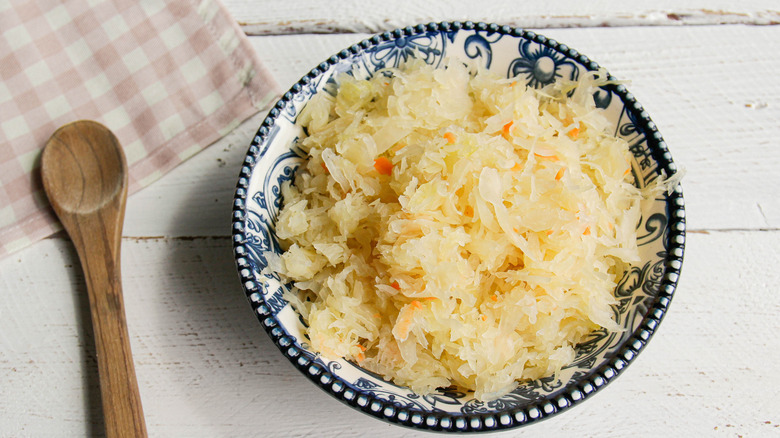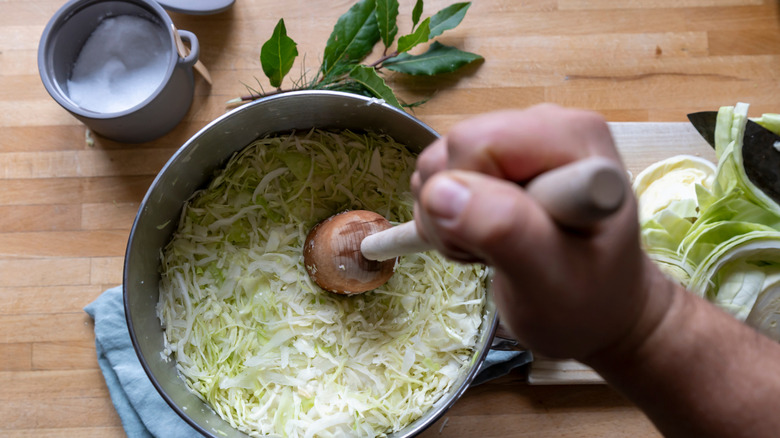The Fascinating Science Of Sauerkraut Fermentation
Sauerkraut is a delicious, tangy condiment made of fermented cabbage that brings a satisfying crunch to the top of a bratwurst, makes a reuben sandwich shine, and ties together a dinner of pork and potatoes. The name "sauerkraut" translates to "sour cabbage" in German, but the origins of this flavorful accompaniment can actually be traced back over 2,000 years to China. People originally started fermenting food in order for it to keep longer, but it also has a number of health benefits thanks to the billions of live microorganisms — mainly bacteria — that you ingest when eating sauerkraut.
If the word "bacteria" just made you reread that sentence, don't fret. There is such a thing as good bacteria, and it's excellent for the health of your digestive tract. While fermented food is a probiotic powerhouse and has a longer shelf life, the process of fermentation is also what gives sauerkraut and other fermented foods like kimchi that distinct and addictive sour taste. And the best part? It's easy enough to make sauerkraut at home.
Making sauerkraut at home is surprisingly simple
All you need to make sauerkraut is salt, a glass jar with a lid, and of course, fresh cabbage (any type will do, but try using red cabbage for a more vibrant sauerkraut). A lactic acid bacteria called Lactobacillus already exists on raw cabbage, and the salt draws moisture out of it and creates a brine. This process takes several minutes of constant kneading, but eventually there will be enough liquid to submerge the cabbage (you can add a little water to ensure it's completely covered). For fermentation to occur, you need to pour the cabbage and brine into an oxygen-free environment, which is where your glass jar comes in. Add everything into the jar and twist the lid on.
Now all you have to do is let Lactobacillus do all the heavy lifting. The salty environment allows the good bacteria to convert the sugars in the cabbage into lactic acid, but is inhospitable to bad bacteria. This process lowers the pH of the environment and makes it more acidic, which is what gives sauerkraut its signature sour taste, crunchy texture, and high probiotic content. Fermentation will begin after about a day, but can take several weeks to achieve the best flavor. You'll know the process is underway when bubbles form on the top. The longer you let it ferment, the more distinct the flavor will be, but the sweet spot is about three to four weeks when stored at room temperature. And don't forget to keep the jar covered with a cloth, which allows for the airflow that will help release the carbon dioxide created during fermentation.

